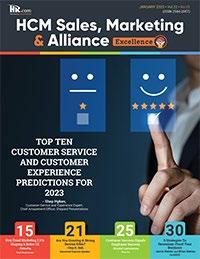



Enhancing The Workplace With Neurodiversity
How to create an employee experience that empowers everyone







How to create an employee experience that empowers everyone


How 15 Businesses Embraced Digital Transformation In 2023 Adopting digitalization is HR processes

Unlocking the power of partner experience for greater CX impact

Insights from top sales performer analysis
- Mike Kunkle, Vice President, Sales Effectiveness Services, SPARXiQ
- Sarah Danzl, VP, Client Marketing and Communications, Degreed - Brett Farmiloe, Founder and CEO, Terkel.io - Norma Watenpaugh, Founding Principal and CEO, Phoenix Consulting GroupHR.com makes HR Professionals smarter and we are sure your solutions do as well.
That being said, we understand how hard it is to market in the Human Capital space, get the attention of your target audience and show HR departments that you are a valuable resource. So, how do you overcome this hurdle?
Easy. Work with HR.com.
With over 19 years experience working with HR solution providers, we give over 1,200,000 HR professionals access to the tools and resources they need to succeed. We work side-by-side with HR solution providers to help them generate sales leads, grow market share, build brand awareness and promote industry expertise.
Checkout our growing list of tools and resources our vendors can take advantage of to get noticed by HR professionals!
The HR Marketing Institute (HRMI) is the ONLY community of Marketing Professionals in the Human Capital space dedicated exclusively to the issues and needs of the marketing professionals and their businesses. This is a community of Marketing professionals who dedicate their time to marketing in the Human Capital space and who support each other to make the right decisions so that your marketing initiatives deliver the impact you need to succeed. Membership includes networking with peers, face to face summits, webcasts, research and benchmarking tools.
Thought Leadership, Lead Generation and Educational Content
HR.com’s Webcasts and Virtual Events are more than an exercise in brand awareness. They are a comprehensive and groundbreaking way of generating tangible sales leads, while showcasing you as an industry authority to a captive audience of clients, prospects and the entire HR.com global community, giving you a greater market reach. In addition, HR.com’s one-hour webcasts provide valuable education and certification credits for today’s forward-thinking HR professionals.
Build your brand, content marketing strategies, and thought leadership with exclusive HR.com research. Choose between custom featured research or state-of-the-industry research sponsorship. With custom featured research, we work with you to develop research on the topic of your choice or align your brand with any of this year’s State of the Industry hot topics to highlight the latest HR trends. No matter which research strategy you choose, come away with your very own branded research report and infographic, establish yourself as an industry thought leader by presenting a webcast, get key insights from the opinions of highly qualified HR professionals, and maximize your ROI, and build a healthy sales funnel with over 1,000 qualified leads.
Looking to expand your marketing reach? Build long-term customer loyalty? Generate high response rates? Drive website traffic? The value of HR.com’s opt-in direct email program allows you to do just that. Nurture potential buyers on a consistent basis through our managed campaign program. Deliver your message directly to HR decision makers’ inboxes. HR.com’s direct email lists are 100% optin, GDPR, CASL, and CAN-SPAM compliant and contain only the most exclusive names and companies in the human capital industry.
Onsite advertising is a great way to reinforce brand and profile new products associated with a product launch. HR.com offers a variety of online advertising solutions including banner ads and premier homepage positioning making it a cost-efficient option for maximum brand exposure.

The HR.com’s Buyer’s Guide is where HR departments from around the world turn first when they need products and services. Put your company at the top of their list and get listed with the resource that HR professionals and decision makers trust.
Aimed at Reaching Your Core Audience
HR.com’s 12 targeted and focused monthly online publications provide an invaluable collection of high-quality HR content and experts’ solutions to our members. Ten of our publications now feature themed editions that focus on specific topics. Sponsorship of research reports and webcasts aligned with the themes are also available.
Our solutions will get you more clients, brand exposure, sales –and a marketing community too!
Our mission is to promote personal and professional development based on constructive values, sound ethics, and timeless principles.
Excellence Publications
Debbie McGrath CEO, HR.com - Publisher
Sue Kelley Director (Product, Marketing, and Research)
Babitha Balakrishnan and Deepa Damodaran Excellence Publications Managers and Editors
Deepak S Senior - Design and Layout
HCM Sales, Marketing & Alliance Excellence Team
Deepa Damodaran Editor

Nataraj Ramesh Design and Layout (Digital Magazine)
Chandra Shekar Magazine (Online Version)
Submissions & Correspondence
Please send any correspondence, articles, letters to the editor, and requests to reprint, republish, or excerpt articles to ePubEditors@hr.com
For customer service, or information on products and services, call 1-877-472-6648
HCM Sales, Marketing & Alliance Excellence (ISSN 2564-2057)

by HR.com Limited, 56 Malone Road, Jacksons Point, Ontario L0E 1L0 Internet Address: www.hr.com
Debbie Mcgrath Publisher, HR.com Deepa Damodaran Editor, HCM Sales, Marketing & Alliance ExcellenceSalespeople in the modern workplace face a unique challenge due to decades-old stigmas surrounding the sales process. These stigmas may stem from the association between salespeople and persistent, annoying cold calls or negative sales experiences.
As a result, many business-to-business employees view salespeople as conniving or opportunistic. However, according to Moogsoft CRO Mike Cabot, being resourceful, attentive, and diplomatic is valuable in many workplace departments, including human resources.
In his article, Here’s What HR Leaders Can Learn From The Sales Department, Cabot shares lessons that HR professionals can learn from his 20+ years of experience in sales.
In the workforce, everyone has unique differences and diversity that makes them stronger as individuals, teams, and organizations. However, some underrepresented groups in the workforce, such as neurodiverse employees, can face challenges related to their differences.
In her article, Enhancing The Workplace With Neurodiversity, Sarah Danzl, VP of Client Marketing and Communications at Degreed and a neurodiverse individual herself, shares how her ADHD has given her the ability to do deep and creative work and solve complex problems when her work environment is supportive.
If you're interested in learning more about digital transformation and customer experience, you can check out Brett Farmiloe's, from Trekel.io, article How 15 Businesses Embraced Digital Transformation in 2023 or Norma Watenpaugh's, from Phoenix Consulting Group, article Partners Are The Customer Experience
That is not all. We also bring you a few other expert columns and hope these will help you achieve excellence in your sales and marketing efforts.
Happy Reading!
In a world of unparalleled challenges (global pandemic, racial injustice, political rivalry, digital 4.0, emotional malaise), uncertainty reigns. Finding opportunity in this context requires harnessing uncertainty and harnessing starts with reliable, valid, timely, and useful information. The Excellence publications are a superb source of such information. The authors provide insights with impact that will guide thought and action.

Excellence publications are my ‘go-to’ resource for contemporary and actionable information to improve leadership, engagement, results, and retention. Each edition offers rich and diverse perspectives for improving the employee experience and the workplace in general.


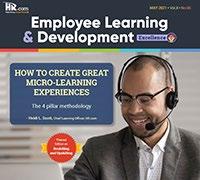
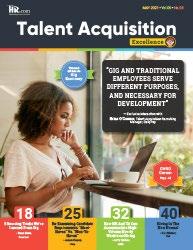
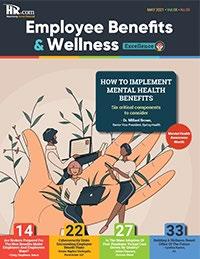
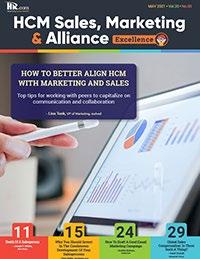



I regularly read and contribute to Leadership Excellence and Talent Management Excellence. I use many of the articles I read to augment my own presentations and I often share the articles with my clients. They are always quick, right on target for the latest issues in my field, and appreciated by my clients. If you want to stay up to date on the latest HR trends, choose a few of the different issues from the Excellence series of publications.


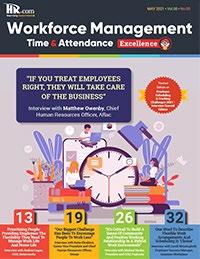
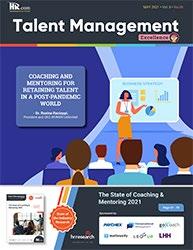
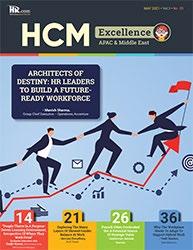
We’re eager to hear your feedback on our magazines. Let us know your thoughts at ePubEditors@hr.com
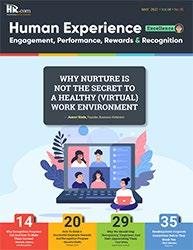 Dave Ulrich
Rensis Likert Professor, Ross School of Business, University of Michigan Partner, The RBL Group
Julie Winkle Giulioni Author, Virtual /Live Keynote Presenter, Inc.’s Top 100 Leadership Speakers
Dr. Beverly Kaye CEO, BevKaye&Co.
Dave Ulrich
Rensis Likert Professor, Ross School of Business, University of Michigan Partner, The RBL Group
Julie Winkle Giulioni Author, Virtual /Live Keynote Presenter, Inc.’s Top 100 Leadership Speakers
Dr. Beverly Kaye CEO, BevKaye&Co.
Thanksto decades-old stigmas about the sales process, salespeople face an interesting dilemma in the modern workplace. Maybe it is the outdated association between salespeople and persistent, annoying cold calls. Or perhaps it is a singularly bad sales experience that has soured some employees on selling entirely.
Regardless of the cause, the fact remains: many business-to-business employees view salespeople in a negative light. They are often perceived as conniving or opportunistic. Having spent my entire career in sales, I sometimes find these associations disheartening.
But at other times, I use my sales acumen to flip this paradigm and view it from another angle. Are salespeople conniving — or diplomatic and careful? Are they opportunistic — or resourceful and attentive to the customers and colleagues around them?
It is not so bad to be resourceful, attentive and diplomatic. In fact, other workplace departments — including human resources — value these traits highly.
The connections between sales and HR do not stop there. Many skills salespeople develop transfer easily to the HR department, where employees demonstrating tact and sensitivity excel. Here are a few lessons HR professionals can internalize from those I have learned during my sales career of 20+ years.
Perseverance is key to closing a sale, yet persistence is a major turn-off for many buyers. Quite the conundrum, no? It is crucial to walk this tightrope correctly because salespeople who cannot tell when to throw in the towel waste their time and the time of wouldbe buyers. Worse, persistent salespeople can often come off as pushy or aggressive, which is a highly inefficient way to make sales (or friends, for that matter).
Leading salespeople are decisive — not persistent. They know when a buyer is interested and when they absolutely are not, making it easier to send that final “thank you” email and wrap up a correspondence. Salespeople who respect buyers’ time are more likely to make an impact and perhaps leave a lasting impression that leads to a future sale.
Similarly, the best HR professionals know how to navigate new challenges because they are decisive under pressure. HR employees must often handle situations that live in “a grey area,” wherein neither corporate policy or the employee handbook applies.
HR professionals and leaders should always act decisively under these circumstances to ensure that their advice is not confusing or ill-received by an employee.
Salespeople are no strangers to rejection. After all, if every prospect said “yes” to every product every time, sales teams would go out of business fast. Still, it is never easy to hear “no.” But the top salespeople I have interacted with in my career have always viewed rejection as an opportunity for improvement rather than a stumbling block.
For example, say a salesperson has spent hours perfecting a personalized sales pitch based on third-party marketing data about a possible client. It is disheartening if the prospect turns them down outright. But leading salespeople would not let that initial rejection stop them from pursuing continuous improvement. Where appropriate, they would gently request feedback on their outreach. Where did they go wrong? Where could they improve in the future? Trust me: sales pros find this feedback invaluable.
Accepting criticism is a challenge, regardless of profession. But that challenge only makes it ever more critical to internalize suggestions. HR professionals who solicit feedback and listen to employee responses earnestly are empowered to create a more inclusive workplace. Unlike salespeople, HR professionals do not even need to ask for feedback on a case-by-case basis; they can gauge employee sentiment through anonymous surveys. My advice? Listen to those responses — especially the negative ones — and make appropriate changes sooner rather than later.
Empathy is the foundation of selling. It goes against workplace stigmas about the sales department, but it is true. Salespeople unable to empathize with prospective customers’ problems will struggle to clinch the final sale. Why? Because a lack of empathy makes it more difficult to fully understand, anticipate and address a customer’s wants and needs.
Furthermore, salespeople who do not honestly believe in the solution they are selling will struggle with converting prospects to customers. That is because many B2B clients are fully aware of sales tactics and can spot an earnest pitch from a rote one. Top customers, who are themselves empathetic during

the sales process, are especially in tune with canned pitches and responses.
It is easy to lose our sense of empathy in the workplace. We are often wrapped up in our daily tasks and unable to spot when a colleague needs help. But it is imperative to fight a lack of empathy in all departments, especially for HR professionals, who are most likely to interact with employees during challenging moments.

Fostering empathy is the first step to understanding a customer’s perspective, followed by conducting thorough research to understand their industry and their organizational role. By unlocking a deeper understanding of a prospect’s situation, sales pros can tailor the sales funnel to the buyer’s expectations. And tailored experiences are fundamental to modern marketing, with 76% of buyers more likely to purchase from brands personalizing their outreach.

Context is vital in the HR department, too. Understanding an employee’s history with an organization, previous employment history and educational background helps HR professionals and leaders appreciate each distinct perspective Doing this in-depth research also enables HR professionals to identify which offerings from benefits to continued education — will assist their collective workforce, thereby creating a more satisfied employee base.
I firmly believe great salespeople can succeed in any job they pursue simply because they are willing to hustle to get it right. And I think the same about HR professionals. HR leaders and managers willing to listen, understand, improve and be decisive will ultimately create a work culture that benefits everyone. And depending on how effectively they implement the strategies above, HR leaders may even land a sale… that is, by building a high-satisfaction work environment that top recruits choose over and over.
Mike Cabot is the CRO at Moogsoft. A Silicon Valley native, Mike brings more than two decades of upper level sales experience to the Moogsoft team, with prior experiences ranging from large public companies like Excite@Home to early-stage ventures like Malwarebytes. Thanks to his passion for sales, marketing and customer service leadership, Mike has built a record of tremendous growth in high-velocity sales environments.
Would you like to comment?
Time flies, whether you are crushing it or being crushed.
Hopefully, you are crushing it!
As management guru Peter Drucker said, “Effective sales leadership is not about making speeches or being liked; leadership is defined by results, not attributes”.

Regardless of where you sit regarding sales to quota, you can always do better. If you are ahead of quota, you can continue to grow your business. If you are below quota, you need to act with a sense of urgency.
For those of you who find yourself below quota year to date, I have two resources to help you get this back on track.
First, see how to proactively manage your boss then follow my five strategies to achieve outstanding results.

Sales are Down. What are you going to do?
I always hated having to explain why sales were down. There is never a good answer.
Sales executives and managers have no shortage of challenges.

I faced challenges when sales were down. One year at the beginning of Q2, we were already behind budget. I knew I had to do something. So, I quickly devised a 3-point plan and marched into my boss’s office.
I stated that I was concerned about sales, and I decided that I was going to do the following:
1. Cancel all training for the next three months
2. Have the trainers out in the field supporting the team
3. Launch a contest that focused on reps increasing their number of calls
I realize that this was not a brilliant plan, but I was being proactive. The following day when my boss looked at his sales report I did not get a phone call asking what was happening as he knew I already had a plan in place.
yourself in your boss’s shoes. S/he has enough to worry about. If your boss is spending time wondering what you are doing about your issues, they are questioning whether you are effectively doing your job.
Before your boss comes to you asking what is going on, it is vital that you communicate and demonstrate that you have a plan in place to address your issues proactively. Remember, the best defence is an offence. Always be proactive in your communication, especially if the business is down.
This article first appeared here
Steven A. Rosen, MBA, is the President of STAR Results. Steven brings over 20 years of experience in sales while coaching and mentoring senior sales executives and front-line sales managers to lead their businesses to new heights. Top Sales World named Steven one of the Top 50 Sales & Marketing Influencers 2013 - 2016.

Click here.
Your boss is no different from you. All bosses want to know two things: 1. that you know your issues and 2. that you are doing something about them. Put
Would you like to comment?
Are you an expert in Marketing in the Human Capital space? If yes, you’re invited to submit articles for inclusion in our publication, HCM Sales, Marketing & Alliance Excellence!
This publication helps Sales and Marketing professionals in the Human Capital space learn emerging trends to help them in their business and now you can share your marketing expertise with them!

Check out our magazine here
Our readers are interested in a number of topics including:
● Marketing hacks for HR Solution Providers
● Building relationships with current and potential clients
● Tradeshow expo halls - best practices for ROI
● Branding and your online presence
● Aligning Marketing roles with your business growth strategy
● Marketing Tactics to increase ROI
● Martech Enablement
● Marketing Analytics
● How to define a “real lead” and how to count its sale value
● How to nurture stronger partnerships between marketing and sales
● Tips for working with influencers and analysts
● Market planning process
● How to build a brand
● How to win with PR
● How to use Social to drive brand recognition and sales
● Your approach to producing and disseminating meaningful thought leadership
● How marketing needs to evolve for success
Article submission deadline: 1st of each month 1
Kindly let us know if you’d be interested to feature your article in our magazine by emailing the editor at ddamodaran@hr.com. You can also review our submission guidelines by clicking here Also, if you are in marketing in the human capital space, we invite you to host a webcast for our HR Marketing Institute. For more details, please email Shelley Marsland-Beard at smarsland@hr.com

Everyone is wired differently - we are all the products of our upbringing, our experiences, and our nature. It is our differences and diversity that make us unique, and our teams and organizations stronger.
However, there are often some underrepresented groups in the workforce when we talk about diversity, including neurodiverse employees.
The stats can make for difficult reading: as many as 80% of neurodiverse adults in the U.S. are unemployed. That is a lot of highly skilled potential talent that employers are missing out on that we are not talking about enough — especially when so many organizations are addressing other inequalities in the workplace, such as gender parity, LGBTQ+ and race inclusion.
There is a larger focus, and systems being set up, to create more inclusive environments. Extending these to include the neurodiverse workforce does not have to be a heavy lift or new project for organizations.
A fifth of the global population is considered to be neurodiverse so you likely have neurodivergent employees already working for you, but for one reason or another, they have not identified themselves as such yet.
Indeed, some adults can go years without knowing or confirming they are neurodiverse. However, understanding the differences in the way your brain works allows you to strategize on what you need to be successful, hopefully allowing you to find ways to tap into the unique strengths you offer.
As employers, creating an inclusive, safe space where employees can celebrate and explore all of their differences can unlock new opportunities for innovation, problem-solving, and ideation. Research shows that neurodiverse individuals often have special capabilities or skills in things like mathematics, being detail-oriented, pattern recognition, creativity, and exceptional memory.
As a neurodiverse person myself, I can categorically say that my ADD has given me the ability to do both deep and creative work, able to solve complex problems — as long as my work environment is set up to support that.
Like all employees, help, understanding and support need to be tailored to each individual to get the best work from them. Leading a large team AND being neurodiverse, I know first-hand that it is easier said than done.
Sometimes we do not set up people for success from the start. The interview process itself can be biased in many ways, and deter diverse candidates. Some neurodiverse candidates may not interview well. For example, they may struggle to think quickly on the spot, display a lack of eye contact or provide over-honesty about their weaknesses. Adapting your hiring process can open the door to
all sorts of interesting and qualified candidates. In an ideal world, basing your hiring and performance decisions on skills data will remove bias from your hiring, internal mobility, upskilling, and remuneration processes. You can also consider pre-recorded video, written answers, flexibility in scheduling, and the ability to bring an advocate, to take some of the pressure off of candidates who may not best display their skills and abilities in traditional interview formats.
Of course, once you have hired a neurodiverse candidate, you need to support them to achieve their goals and be happy and engaged at work. Some employers get stuck when you mention accommodations, such as flexible working hours, remote or hybrid options, or even the ability to wear headphones in the office.
Neurodiverse individuals may have physical or verbal actions that can draw attention to their neurodiversity, like Tourettes or stimming. Many accommodations are manageable and also require a little bit of understanding and flexibility.
It also is not a one-size-fits-all approach. As Dr Stephen Shore, an autism advocate, who is on the spectrum, explains, “If you’ve met one person with autism, you’ve met one person with autism.”
That is why managers play a critical role in creating the best environment for their teams, neurodiverse or not. They are closest to each team member and should feel empowered to advocate for the schedule and accommodations needed for each individual. Equip your managers with the right knowledge and skills to coach, advocate for, mentor, and develop their people.
A ‘user manual’ for each team member can help colleagues understand how to work effectively with each person. First coined by Adam Bryant in the New York Times, these personal manuals are becoming more popular in workplaces, especially with the rise of hybrid work. These manuals can be as detailed as needed, covering everything from schedules to communication preferences, how to deliver feedback, passions, and fun facts. They are a great way for a team to get to know each other more deeply.
Talking about their needs can be more challenging for neurodiverse people, who can sometimes miss the social cues and nuances needed to build strong working relationships and advocate for themselves. Managers can help bridge this, by being mindful of the needs of their direct reports and teaching them the best ways in the company to share wins, needs, and other opportunities for connection.

For example, there might be a company Slack or Teams channel, where exciting project results can be shared. Apps like Donut and HeyTaco can encourage informal conversations between different teams.
Learning and development is another key area where you can support team members. Again, this will look different for everyone depending on their learning style and other commitments. Having an open, honest dialogue about what learning and career development opportunities are available will encourage people to constantly think about how they can grow.
Personalizing learning will enable neurodiverse employees to take the lead on their own development and engage with content formats that suit them best. This may be written pieces, video, or it could involve cohort learning. Because everyone is different, it is crucial to have a range of options on offer.

One thing called out, in particular, for some neurodiverse employees is the need for support around social aspects of the workplace. Having learning pathways on offer to build skills in team communication and collaboration can help employees feel more confident in navigating some of the nuances of the workplace. The same applies to mentors and coaches, who can offer guidance, help employees to set goals, and push them to go for opportunities they otherwise might not feel comfortable applying for.
Supporting all employees to achieve their potential in an environment that suits their needs, commitments, and working style really is a no-brainer. It gets the best out of everyone, removing any friction that otherwise distracts them from their work. Of course, this has the added bonus of creating a truly inclusive workplace. That does not exclude anyone on the basis of their gender, ethnicity, socioeconomic background, sexuality, or neurodiversity.

 By Shep Hyken, Shepard Presentations
By Shep Hyken, Shepard Presentations
Theother day I was having breakfast with 11 of my friends. The server came over, introduced herself, and said, “I’ll be taking care of you.” She took our orders, and a few minutes later, a different server dropped off three of our meals. Then, two more servers brought a few more meals a moment later, and another server showed up just after that with the rest of our meals. It was not until after all the meals were served that our original server came over to ask if everything tasted great.
Was it this server’s job to simply take our orders and let others do the work? No!
I observed all of the people who brought us our meals. They also had other tables to attend to. And, I noticed that our server was dropping food off at different tables.
Different restaurants may have different processes, but in this one, the food is prepared, plated and set on a counter with heat lamps. Once the food is ready, it does not matter whose table the food is for, whoever is available to take the hot food out immediately becomes responsible for the meal.
I liked what I was seeing. The employees recognized that customer service is a team sport. It’s everyone’s job to make sure the customers leave happy.

Unfortunately, I have also witnessed the opposite at a restaurant. The food is set out on the counter, but the server responsible for it is busy taking care of another table. So, the food just sits there while other employees ignore it – because it’s not for one of “their guests.” Talk about a lack of team spirit!
Another example of this lack of team spirit is something I once saw at an airport. A baggage handler was driving a load of bags out to an airplane, and one of them fell off. I watched as numerous other baggage handlers drove by it. They would slow down, look at the bag sitting there by itself on the tarmac and then drive away. At least a half-dozen employees drove by the bag and did nothing. I am pretty sure that the passenger arrived at their destination and was disappointed when their luggage did not show up at the baggage carousel.
The point of these examples is that everyone must take care of the customer, regardless of who the customer “belongs” to. If they see that something is not right, they should not just ignore it like the baggage handlers did.
Lately, I have resurrected a concept I used to cover in keynote speeches: every employee has at least two jobs. The first is to do the job they were hired to do. The second is to take care of the customer. When all employees understand that, the customer will most certainly have a better experience.
Shep Hyken is a Customer Service and Experience Expert and the Chief Amazement Officer at Shepard Presentations. He is a New York Times bestselling author and has been inducted into the National Speakers Association Hall of Fame for lifetime achievement in the speaking profession. Shep works with companies and organizations that want to build loyal relationships with their customers and employees.
Would you like to comment?

Fromimproving data accuracy through automation to increasing productivity through hiring optimizations, here are 15 answers to the question, “Can you share any helpful examples of how your company has embraced digital transformation, integration, and/or automation in your HR processes?”
● Automating Timekeeping to Improve Data Accuracy
● Prescreening for the Most Qualified Candidates
● Self-servicing via Turbine
● Tailoring Learning
● Investing in Employee Recognition Software
● Implementing Learning Management System (LMS)
● Using an Applicant Tracking System
● Utilizing Automated Scheduling Software
● Hybridizing the Office
● Making Our 360-Performance Reviews Interactive
● Giving Employees Faster, More Personalized Outcomes
● Processing Documents
● Tracking and Evaluating Data
● Upgrading Offboarding
● Reducing Time-to-Hire and Spurring Productivity
Automating timekeeping helps human resources and the company by reducing manual tasks, improving data accuracy, and freeing up HR staff to focus on more strategic initiatives. With an automated system, HR can manage timekeeping data efficiently and accurately, reducing the risk of errors and discrepancies.
The real-time data provided by the system also enables HR and management to make informed decisions about employee attendance and work hours. Automated timekeeping also eliminates the need for manual time sheets, reducing paper waste and making the process more environmentally friendly.
Mark Pierce, CEO, Cloud Peak Law Group
One of the best uses of digital automation is making the pre-screening of applicants faster and more efficient, so you only interview the most qualified people. No need to manually and individually conduct pre-screening, which takes up valuable time and resources; instead, your HR team can set pre-screening questions for candidates.
For example, if you are looking for a particular type of experienced candidate, you can ask the question, “Do you have experience working with Adobe Illustrator?” in the pre-screening. Only those candidates with the right experience will pass this pre-screening phase and be let into future interview rounds. This type of automation helps to ensure that, by the time they reach the interview stage, the candidates have already been narrowed down and are properly qualified.
A few years ago, I was experiencing a problem. Having built a growing business, I spent too much time approving time-off requests, expenses, and so on, and I just couldn’t find an application that would automate those simple tasks in a way that suited my needs.
So, being a bit of an entrepreneurial geek, I built that application myself (with the help of some talented developers in Ukraine, who we provided with direct donations last year to support the war effort over there). That application is called “Turbine.” It is essentially a self-service platform for people to book time off and log POs and expenses.
It’s ideal for remote or hybrid businesses. And though I built it for my use, I could see the value for others, which has meant this one application has turned into a tidy side business for me, which is rather pleasing.
Anthony Martin, Founder and CEO, Choice Mutual
After embracing digital transformation in our HR processes, my company implemented tailored learning for the employees. Tailored learning involves gathering data from all departments on employee skills and workflow patterns, then customizing training to speed up fulfilling individual and organizational goals.

We’ve found that this approach has enabled us to allocate resources much more efficiently and get business results much faster—it’s even helping us reach higher levels of customer service! Tailored learning has provided our organization with an overall competitive advantage, as it allows us to keep up with new trends, respond quickly to changes in the industry environment, and meet customer needs in a better way.
Lorien Strydom, Executive Country Manager, Financer.com
We’ve embraced digitalization by applying technology to reward deserving people in the company. We achieve this by replacing the traditional recognition approach with employee recognition software. Doing so lets us track everyone’s performance and monitor their achievements in real-time.
It also helps boost employees’ morale and makes them feel more valued for their contribution to the company. Through employee recognition software, employees no longer need to wait for a year to reap the fruits of their hard work. As long as they deliver, the management can immediately recognize them on time, increasing employee satisfaction and encouraging others to perform better.
Allan Stolc, Founder, Bankly.dkEmbracing digital transformation has been a part of our HR processes since we moved to hybrid mode. And one great example is the adoption of an automated recruiting process using an applicant tracking system (ATS).
This system helps us save time by allowing candidates to easily apply online, streamlining the process for job seekers and our recruiters. It also enables us to better track applications and review the strongest candidates who otherwise might be overlooked.
Additionally, this ATS automatically sends notifications when positions are opened or updated so that job seekers can stay informed about opportunities within our organization. By automating these tedious tasks, our HR teams focus more on other areas, such as employee engagement activities and training programs, after new hires join us.
Automation has saved us time and energy while making our process simpler and more streamlined than ever before!
Our organization embraced digital transformation by implementing a learning management system (LMS) for employee training and development. It allows our company to create and deliver online training courses and assessments, track employee progress, and provide personalized feedback.
This helps to improve the quality and effectiveness of employee training and development and makes it more accessible to employees. Besides that, the LMS also helps to reduce the administrative burden on our HR staff and allows them to focus on more strategic tasks.
Georgi Todorov, Founder, ThriveMyWay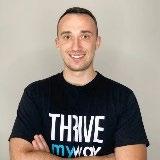
 Maria Harutyunyan, Co-Founder, Loopex Digital
Maria Harutyunyan, Co-Founder, Loopex Digital

Business and HR leaders have embraced digital transformation, integration, and automation in their HR processes by utilizing technology to streamline and improve existing processes.
For example, our company has implemented automated scheduling software to replace manual scheduling processes. This has allowed our HR team to spend less time on mundane tasks and more time on strategic initiatives that help to further our business goals.
Tawanda Johnson, HR and DEI Consultant, Sporting Smiles
At our company, we have taken a flexible approach to the remote vs. onsite work debate. Our schedule is Monday through Wednesday when we see each other at the office, and Thursdays and Fridays are remote. This is how we stay in sync and cultivate our company culture while also enjoying the flexibility of working from the comfort of our homes.
Additionally, we give an additional 10 remote days to anyone who has been with the company for over six months. We made these decisions in response to the growing demand for remote work. We wanted to meet this need without compromising what we consider important for an outstanding business culture: real-life human interaction.
I believe this approach combines the best of both worlds. So far, it has worked smoothly; our employees enjoy having time both for socializing with their teammates and winding down at home.
Piotrek Sosnowski, Chief People and Culture Officer, HiJuniorWe use automated workflows to make our online 360-performance evaluations interactive. The reviews flow like conversations from the manager and other stakeholders to the team member, allowing them to share review-question answers, ask for feedback or supporting information, files, etc.
Then the completed review segments are automatically aggregated into one completed document for the team member and manager to reference. Our team members love the transparent process, and our managers love the reduced administrative time.
Susan Snipes, Chief People and Culture Consultant, GoCo
Automation is non-negotiable as employee benefits and perks programs become increasingly flexible. Offering blanket coverage simply doesn’t work for modern teams and virtual health adds another big element that would otherwise totally overwhelm HR.
We use AI-based platforms so that employees can autonomously get the answers, reimbursement, and coverage they need. We cover everything from benefit eligibility terms to education, open enrollment, and benefit onboarding through one system. Employees get faster, more personalized outcomes, and it takes a load off HR teams.
Maximilian Wühr, CGO and Co-Founder, FINN

One of the most strenuous work processes associated with an HR department is documentation. From candidate resumes and job descriptions to employment contracts and exit documents, people in an HR department are constantly wading through loads of paperwork.
Considering our own lineup of products and expertise in the industry, we have implemented several solutions in the recruitment AI niche to help our HR department function smoothly and efficiently.

From resume matchers, parsers, and redactors to ID extractors and job description parsers, our tools provide accurate data and insights and dependable, human-like analysis. With intelligent document processing removing plenty of pre-existing roadblocks from their workflow, we are happy to say that our HR department now finds a lot more time to concentrate on their core responsibilities.
Brendan McGreevy, Head of Strategy, Affinda
CRM software customer and employee data is crucial to almost every business, but it can call for time-consuming analytics and outdated tracking techniques. CRM software helps us automate some of this, saving us time by eliminating the need to keep track of customer interactions and ensuring correct data collection.
Thanks to the centralization of all employee-client interaction records, we have complete control over how the data is displayed, enabling us to make judgments more quickly and rationally. CRM software can also track and evaluate leads, giving us more time to concentrate on customers with the best potential to become repeat customers.
Jason Moss, President and Co-Founder, Moss Technologies
Last year, our executive team began conversations surrounding how we could leverage HR automation technology for our clothing brand. Specifically, we learned that there are many innovative software solutions available that can drastically reduce the time-to-hire for companies.

We settled on WorkBright, a solution that automates hiring workflows—like the recruiting process, onboarding tasks, and background screenings. This has enabled our new employees to work faster, which has spurred a quantifiable increase in productivity company-wide.
Nabeel Abdullah, CEO, Sapphire
Offboarding is your last chance to leave a lasting impression on exiting employees. It’s a time-intensive and often awkward process for everyone, especially if the employee isn’t departing on great terms.
By automating offboarding, you can save countless hours of manual work, avoid further employee alienation, and keep your business safe. AI allows you to remove an employee’s data and equipment access on time, automatically alert you to concerning behavior on the system, schedule exit interviews, and update payroll accordingly.
When you use AI for offboarding, you have more time to give employees a proper send-off and ensure they get the time they deserve to speak about their best and worst experiences with your business. In turn, you’ll get the feedback you need to build an even stronger business and increase employee retention.

Brett Farmiloe is the Founder and CEO – and currently CHRO - of Terkel. io, a platform where business leaders can answer questions related to their expertise and get published in articles featuring their insights. Brett is a Society for Human Resource Management (SHRM) Influencer and has also been a keynote speaker at several state SHRM conferences around the topic of employee engagement.
Would you like to comment?
 Tory Gray, CEO and Founder, The Gray Dot Company
Tory Gray, CEO and Founder, The Gray Dot Company
Ifhard skills are the technical competencies, degrees, certifications, and experience that a person has, soft skills are everything else that can make a candidate successful on the job. Too often, hard skills get all the glory - in our education, on CVs, and in the minds of hiring teams - yet soft skills account for 85% of job success. Talent acquisition teams can harness the power of soft skills simply by understanding which ones to look for and how to measure them in the hiring process. Getting this right means that hiring teams will be able to source from the hidden talent market, which is meaningful in this tight hiring market that is being fueled by a global labor shortage.
There are many lists of soft skills available if you search around Google, and some have listed as many as 195 different soft skills in total. Hiring teams that attempt to measure all of these are going
to either be overwhelmed or have mixed messages about which candidates are best for available positions based on the soft skills they possess.
Hiring teams need to understand which soft skills are relevant for the positions they are hiring for and measure these at the position level. Consider that the soft skills needed for a sales role would be very different from those needed for a customer service role. For example, these are some of the key soft skills that a hiring team should measure for a sales role:
skills, or a broad set of soft skills. Hiring managers have to accurately measure a candidate’s attributable hard skills, language skills, and foundation soft skills, and then they need to understand the particular soft skills that will make a candidate successful in a given role. In the image above we see qualities like active listening, or the ability to build rapport with a client, as key to making new sales reps perform well.

Source
As you can see, it is not just about hard skills, language
Around the world, there is a growing demand for talent in every sector. In the US, the job vacancy rate is 7%, which is nearly unprecedented. Consider that there are currently 1.2 Million job openings just for engineering jobs. Additionally, the phenomenon of quiet quitting has meant that companies are opening new positions to make up for lost labor elsewhere. The combination of different factors means businesses are going to have to start thinking outside the box to source new talent. Soft skills are the way forward.
Measuring soft skills can help employers identify candidates that they would otherwise not have seen. For example, screening tools may be set to only look for hard skills, passing over qualified candidates who could do the job well. It can be difficult for employers to measure creativity, problem-solving, and time management skills which were acquired “on the job or raising a family, managing a side hustle or working in their community,” says Forbes in a recent article about hidden talent data.
Recently, the Greater Houston Partnership created a one-hour presentation as part of their UpSkill Works Forum series dedicated to understanding how soft skills help employers navigate the post-Covid-19 workforce. The panel concluded that soft skills can help close the current labor gap and lead
to better hiring decisions. They even say that soft skills will be increasingly important as artificial intelligence (AI) permeates our workforce.

There are a few different methods that hiring teams use to measure workplace soft skills during the hiring process. Spoiler alert, some are much better than others. The top three methods to measure soft skills today include:
1. Automated soft skills assessments
2. Behavioral tests
3. Interviews
Behavioral tests are flawed because they are time-consuming and costly, and if they are set up to be multiple choice the recruiter cannot measure written or spoken performance. Interviews are also costly, subjective, and
fail to reproduce the real work environment. Additionally, neither behavioral tests nor interviews work well at scale and neither is guaranteed to improve hiring performance.
To measure soft skills effectively, look for an automated soft skill assessment that can be customized to the particular roles you are hiring for, and one that can prove they have helped other teams increase hiring performance. Once you have got your assessment engine in place, you will be able to hire based on skills to find the 27 million (in the US alone) hidden talent workers out there right now!
Stephane Rivard is the Co-founder and CEO of HiringBranch and a lifelong entrepreneur. In his spare time, Stephane likes to play chess, run, ski, mountain bike, sail or participate in any outdoor adventure. His greatest soft skills include problem-solving, building rapport, curiosity, and divergent thinking.

Greatcustomer experience (CX) fuels revenue growth. This statement sounds like common sense—plain, simple and supported by many studies over the years. However, it takes on new meaning in today’s world as analysts, sales leaders and executives alike agree the customer journey has forever changed.
CX is the crucial element that enables brands to survive disruption. Smart businesses have doubled down on customer experience, in particular the digital experience, since so much of a customer’s decision-making is now done online. CX is also what creates preference for brands and keeps customers connected to those brands.
In 2020, I was inspired by research* done by Salesforce that highlighted the connection between employee experience and customer experience. While it makes perfect sense when employees are on the frontline of your business, it turns out that even when they are not on the front-edge of the business happy employees means happy customers. Moreover, companies that have high EX and high CX are growing at twice the rate of their less happy peers.
“The fastest way to get customers to love your brand is to get employees to love their jobs.” Tiffani Bova, global growth and innovation evangelist, Salesforce, author of Growth IQ and the forthcoming The Experience Mindset
Our partners are often on the front line between our customers and us. And there has been growing acknowledgment that partner experience matters. It drives partner productivity and stickiness. Partners who are committed to your business value proposition are more likely to invest in the relationship and expertise around your products/ services. In other words, good partners enable your business to scale. Analysts, advisories and forward-thinking ecosystem orchestrators are taking note.
But how does this translate to how your customers experience your products and brand through partners?
Analysts often claim that up to 75% of all world trade is delivered through or with a partner. How do you separate that experience with your product or service from the experience the customer has with your partner?
Answer: You cannot.
Once you understand this, you will think about how you partner in a very different way.
We often think of a channel partner as a route to market. But partners have become inextricably intertwined in the customer experience. There is a parallel partner journey across all the touchpoints of the customer journey.
In the digital customer experience, for instance, customers are likely to have multiple touchpoints before they reach out to a salesperson, and that person is increasingly a partner, who can bring the whole solution and talk the language of business outcomes. Partners more frequently than not identify the customer opportunity. Yet, recently released research indicates that only about half of partners are actually transacting and contracting the opportunity, at least in the field of business-to-business (B2B) technology sales.
This points to a growing influence of partners who are not traditional channel distribution partners.
As you look across all the roles a partner may play in the customer experience, it becomes apparent that no single partner can fill all the roles. In B2B enterprise sales, customers are buying more than a product or a service. They are buying business outcomes. Most enterprise technology sales, including human resources solutions, are comprised
of a cluster of partners, an ecosystem of products and services. To ensure a well-orchestrated customer experience, the ecosystem must be well-orchestrated as well.
Partners who talk the language of business outcomes are at the forefront of the sales pursuit and, most likely, the first contact for a customer. When partners are first on the scene, they are also in the prime position to recommend the technologies needed to best achieve the customers’ expectations.

Creating the customer value proposition and building the business case come early in the sales process and create a compelling reason to buy. The partners who assist in this process need to understand the customer, their industry, their challenges and the opportunity for the customer if they decide to award the business. This is where those deep customer relationships really matter.
This is also where a strong partner experience and relationship help vendors get designed into the value proposition. Partners need to understand how your offer contributes to the value proposition and enables a customer business outcome.
Often vendors are frustrated that partners claim to be agnostic in their recommendations. Advisory partners will assert they only recommend what is best for the customers’ requirements. However, in reality, partners recommend the technologies they know best and have the most confidence in.

Here is where partner experience suggests a real competitive advantage: If partners have had a great experience with you and your products/services, and they know you have their back when they reach out to you, then they will have a greater confidence level in recommending you versus alternatives.
In these ways, investing in partner experience has significant value to the customer, strengthening the value proposition of expected business outcomes, streamlining the implementation and providing a unique and targeted customer experience that will grow your business.
1. “The Experience Equation: How Happy Employees and Customers Accelerate Growth,” https://www.salesforce.com/ form/conf/ forbes-ex-cx-growth
2. “Partners are the Customer Experience” https://www.strategic-alliances.org/pxcx
Norma Watenpaugh is the Founding Principal and CEO of Phoenix Consulting Group. Norma is a board member of the Association of Strategic Alliance Professionals and leads the U.S. delegation to the ISO standards committee for Collaborative Business Relationship Management. She is also a member of the Board of Advisors for HRTechAlliances.com.

Would you like to comment?
“Companies that understand the multitude of touch points between partners and customers and the resulting impact will succeed in getting more prospects, closing more sales, and keeping customers for life.” Jay McBain, Chief Analyst, Canalys
Itdoesn’t matter where you live, demographics everywhere are changing quickly. Increasingly, you are working with people who are not like you. They may be of a different race or ethnicity, different gender or gender identity, may not speak your language fluently, may come from different countries, cultures, or backgrounds, maybe LQBTQ+ may be of a different generation, or may simply have a different approach to work than you have.
And demographics aren’t the only way we can be different from one another. Consider these diverse types of personalities and traits:
● Morning people & night owls
● Introverts & extroverts
● Parents & non-parents
● Creative thinkers & analytic thinkers
● Risk takers and the risk-averse
● Listeners & talkers
● Tech-savvy & tech-phobic
● Rural & metro
● Military & civilian
The list goes on and on. So how do you work effectively with someone with whom you may not see eye-to-eye or who has a totally different approach to work than you do? And as a leader, how do you bring
your diverse team together to be productive, despite their differences?
are four tips for working in a diverse environment
When working with someone who is different from you, the first thing you typically see are the differences: gender, age, style of dress, color of skin, etc. But people are people – we have families, friends, kids, or pets. We have favorite foods, movies, books, hobbies, or sports teams that we like.
When you find common ground with another person, it becomes a shared bond, something that connects you. You can use anything to start a conversation with someone, with the goal of finding common ground. For example, if someone is wearing a sports ballcap, I will ask if that’s their favorite team. Even if there is nothing else besides weather or temperature, I will use that as a conversation starter. Here are some examples:
● “That’s a cool necklace you have on. My mom makes jewelry – where do you find your pieces?”
● “Your lunch looks and smells so good – do you cook? I am trying to do more cooking these days.”
● “Do you think they’ll ever fix the heat in this building? Are you as cold as I am?”
Different perspectives, approaches, and viewpoints can often lead to friction at work. Not everyone sees things the same way, and this can result in challenges and tension when people try to “win” an argument or persuade others to their point of view. Instead, say: “I see it differently.” This phrase works magic because when you say, “I see it differently,” you’re not being antagonistic, judgmental, or superior. You’re not being combative or even trying to persuade the other person. You’re simply stating that you see it differently.
This will likely lead to a constructive conversation about how you see things. You’ll share your point of view, and a discussion will follow. These four words can turn a debate into a discussion.
Most of us try mightily to like the people we work with. And we may feel like we’re doing something wrong when we don’t like someone. Perhaps we feel we should just try harder. But liking and disliking are emotions, and at work, you can leave emotion out of it. You don’t have to like someone to be able to work effectively with them. You don’t have to have them over for dinner or socialize with them. You just have to work with them.
Sports teams do this all the time. A woman who plays on a soccer team once told me that she didn’t really like about half of the people on her team. “But when we get out on the field, we have a job to do, and we do it.” When you realize that it’s OK to not like someone, it frees you to focus on the job at hand. Of course, you must be respectful and professional at all times, but you don’t have to like someone to work on a budget forecast with them.



A client of mine told me about an engineer at their company who was in a meeting and was “peacocking” a bit – trying to show the rest of the group how smart he was. Someone made a suggestion, and he replied, “That’s the most retarded idea I’ve ever heard.” It was an outrageously offensive comment. Yet everyone knew this guy was not trying to mock mentally disabled people. He was likely using a word he’d used all his life, completely unaware of how inappropriate and offensive it was. It’s no excuse – it was wrong.
Here is how my client addressed the issue: “Ted, not sure if you know what you said in today’s meeting. Here’s what you said. Here’s why it’s unacceptable. And here’s why it can never happen again - it has no place in this company or any business conversation. Are we clear?”



The engineer was mortified. He truly hadn’t realized he’d said that, and he was very remorseful. But the fact that his supervisor brought the conversation back to business immediately and kept the focus on constructively moving the business forward. Obviously, if this continued to be a problem, the company would address it, but sometimes people say the wrong thing, not out of malice or meanness, but out of ignorance and carelessness. Give people one chance to right the wrong and bring it back to business.
Would you like to comment?

Inthis article, I am going to share some simple concepts that I have seen deliver radically improved results across a sales force. And by “radically,” I mean improve opportunity management effectiveness and skyrocket win rates by 25-40%. I have been part of delivering these results, multiple times in my career, for both employers and clients. it is entirely possible.
The advice comes from Modern Sales Foundations, a course that was developed based on over 16+ years of top sales performer analysis, modernized for working with today’s buyers.
Let us dig in.
First up, is qualification. This seems obvious, but I am not going to get into the various qualification models today or teach the pieces and parts. That’s obviously important, but it is a separate topic for a different day.
Instead, I will offer something you can consider regardless of the specific method you use – the levels of qualification – which is something that I rarely hear discussed.
● The first step is to determine the level of early lead qualification that is required, to continue talking and exploring. As always, this is contextual, but you should establish a lighter, minimum requirement to avoid disqualifying too early. Great sellers often use insights, data, case studies, and expert discovery to unearth or create an opportunity that the prospect may not initially be thinking about or aware of yet.
● The second step is to determine the level of qualification needed later, to continue pursuing the opportunity. This fuller qualification prevents sellers from chasing down rabbit holes and wasting time on deals that are not going anywhere – or at least not at the present time –and ensures that you have a reasonable chance to win the business. This level of qualification is a reality check that often occurs during or soon after discovery. (Although, in complex business-to-business opportunities, especially with longer sales cycles, qualification – like discovery – may be ongoing, because new stakeholders are introduced, others leave, budgets shift, and in general, things change.)
My point here, is that you should make a purposeful determination on these levels, clearly define them,
train them, and coach to them. They should be well documented in your CRM, preferably with a scoring system. This allows managers to assess the effectiveness of the rep’s qualification by asking questions and digging into the details. It also allows sales operations to do a multivariate regression analysis of the data, over time, to correlate qualification elements and the ratings to wins and losses.
Qualification is also very contextual. On the elements of timing and urgency – as just one example – if your prospect initiated the contact, asking about timeline and assessing urgency is sensible upfront. If you initiated the contact, timing remains important, but it is not as crucial immediately – and it is your job to uncover or create urgency and to build a compelling business case – assuming there is one.
Ignoring these nuances, and not training sellers to apply judgment to address them, is one reason that companies implement a qualification method, but still do not see better results afterward. Do not let that be you. Realty is messy and “the map is not territory.” Get into the gray areas and nuances, foster judgment, capture ratings, and analyze the data, when you can.

The next concept is mapping the buyer landscape for opportunities in motion. In addition to having the right decision makers in the deal, which is part of qualification, it is important to assess the landscape and relationships. Here is what I mean.
To start, assess the Buyer Type for each stakeholder. Are they a:
● Financial Buyer, who is concerned about costs and outcomes, and who owns the budget or has funding control?
● Feasibility Buyer, who is concerned about how your solution will work in their company, in context?
● Functional Buyer, who is a user of your solution and is impacted by the day-to-day use case and process or workflow changes?
Then, assess their attitude toward you and their Buyer Roles. First, do they view you, your company, and your solution:

● Positively?
● Neutrally?
● Negatively?
And then, because of that, are they:
● An Advocate for you? And if so, might they be an internal Coach, or better yet, a full-fledged Champion?
● A Neutral Party, who is sitting on the fence, or at least so far?
● Or, are they a Detractor, for some reason, who may be advocating for another solution, or just against you and yours?
Next is their level of Influence. Are they:
● An Influencer, who has some level of recognized expertise, sway with the decision makers, or political capital?
● A Decision Maker with the authority to make a purchase commitment (who perhaps controls the budget or funding decision)?
● Or, are they a behind-the-scenes Approver, who could sweep in at the last minute to approve –or veto – your proposal? (And, do you even know if there is a lurking Approver?)
Also, keep in mind that there is a sliding scale for these aspects. It is rarely cut and dried or black and white. Both Buyer 1 and Buyer 2 may be Influencers, but Buyer 2 may have much more clout in the organization.
Once you have mapped out this Buyer Landscape, you will have a much better understanding of your buyers and the current state of the landscape, and what you need to do differently to increase the likelihood of a win.
Read the complete article here.
Mike Kunkle is Vice President, Sales Effectiveness Services, at SPARXiQ.






